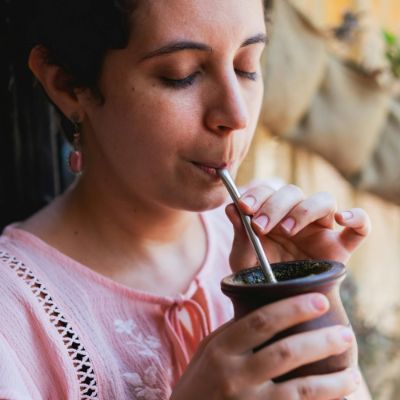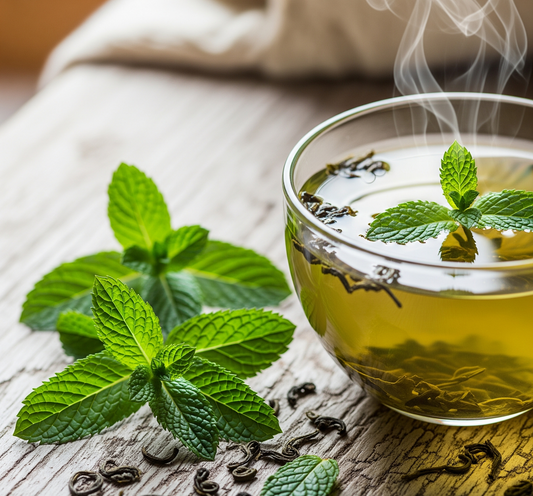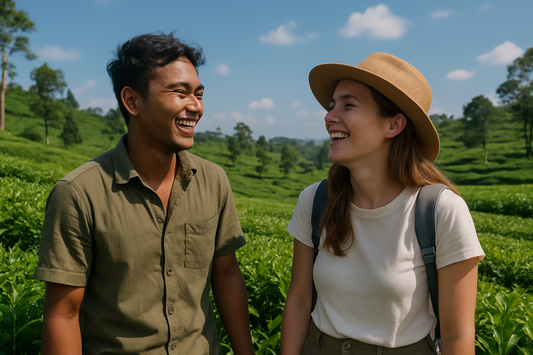Yerba Mate is a caffeinated drink from South America made from the leaves of the Ilex Paraguariensis plant. Despite its recent global popularity, it’s not actually tea but rather a tisane due to its caffeine source. The taste is earthy and robust with hints of bitterness, reminiscent of coffee or dark chocolate, and it leaves a light sweet aftertaste. Making Yerba Mate involves a ritualistic process using a gourd, yerba leaves, and a bombilla. It contains about 70mg of caffeine per serving, similar to coffee, and also offers health benefits like antioxidant and anti-inflammatory effects, although excessive consumption can lead to side effects due to its caffeine content.
A drink that has seemingly captured the world’s attention overnight, the Yerba Mate tea is a caffeinated drink that isn’t actually tea. This South American beverage is said to have the strength of coffee, the health benefits of tea, and the sweet goodness of chocolate. Amazing, right? We know! But this begs the question! What is this wonder drink if not tea? We’re here to quench your queries.
The Yerba Mate has a long history, but this drink only recently started gaining momentum in a global scale. This can largely be attributed to South American footballers like Lionel Messi, Sergio Aguero, Paul Pogba, Luis Suarez, and Antoine Griezmann seen drinking a gourd of Mate on their way to the dressing room or during interviews. Given how it is consumed in a gourd that resembles a cup, it is not surprising to see why people might think it is tea.
Yerba Mate, or just Mate, is made from the leaves of the Ilex Paraguariensis plant that is native to South America. This leaf is known as yerba or “herb”. This plant is among only a handful of plants in the world other than coffee, tea, kola nuts, guaranas, and cacao that produce caffeine. This is what sets it apart from tea! This is also what makes Yerba mate a tisane as only drinks made from the Camellia sinensis plant can be labeled as tea. It is so famous among people in the regions between modern countries of Brazil, Paraguay, and Argentina that is to this day, consumed 6 to 1 over coffee.
What does Yerba Matte Taste Like?
The taste of Yerba Mate can best be described as earthy and robust. Close your eyes and imagine walking through a lush, green forest and taking in the fresh scent of the soil and trees! That’s what drinking a gourd of Mate feels like. While most new to this drink might consider the taste quite strong, there’s no denying that it is also refreshingly invigorating.
Besides the earthy textures, Yerba Mate can also have a slightly bitter taste, that can be quite pleasing to the palate. Think of the taste of a fresh cup of coffee or dark chocolate. The taste is just bitter enough to leave a lasting impression. It’s not overpowering and adds a level of complexity and sophistication to the drink.

Yerba Mate has also been described as having a grassy taste. This is largely because of the leaves that are used to make the drink. These leaves are plucked from the Yerba Mate plant, which comes from a specific type of holly tree. They are rich in nutrients and have a distinct and refreshing aroma and flavor.
If you’re still not sold on the drink, Yerba Mate also has a pleasantly light sweet aftertaste. You can also add sugar and honey to accentuate its goodness. This sweetness helps in balancing out the earthy and bitter flavor profiles.
How to Make Yerba Mate?
For many people, preparing a fresh cup of Yerba Mate means more than just brewing a drink. The ritual of making a cup of matte can be a social - bonding experience. Before we get into the process, let’s first understand the instruments you’ll need.
The first thing that you’ll need is a gourd. Traditionally a hollowed and dried-out squash, modern-day gourds are made of metal, wood, or ceramic. You will also need the yerba, or “herb” used to prepare the drink. This is what you might refer to as the yerba leaves.
Lastly, you’ll need the bombilla, a short metal straw made of silver, copper, or stainless steel with small holes that act as filters at the bottom. Bombillas are similar to tea strainers But instead of preparing the tea in the strainer and removing it to drink, you filter out the yerba as you drink.

Now let’s explore all the steps involved in more detail.
First, fill the gourd ¾ with yerba or Yerba Mate leaves.
Cover the gourd with your palm or a lid and shake it to bring the smaller particles to the top. This will help prevent the bombilla from clogging up as you drink.
Once shaken, keep the gourd slightly tilted to one side. Doing this allows space for water and the bombilla to be poured and placed respectively.
Now insert the bombilla and first pour some cold water into the vessel. This will help saturate the leaves and allow them to bloom.
Once the herbs have bloomed, pour some warm or close-to-boiling water. Using boiling water can bring out the hard bitterness of the yerba. So use water that is somewhere between 80 to 90 degrees Celsius.
You can now start sipping on your freshly brewed Yerba Mate drink. After finishing your drink, refill the gourd again and pass it to a friend or family member.
The Yerba can be reused and reinfused up to 10 times. But keep in mind that they will lose quite a bit of flavor with each infusion.
How much Caffeine is in Yerba Mate?
As with any beverage, the exact caffeine content of a serving of Yerba Mate depends on the variety of plants used and how it is produced. A typical cup of Yerba Mate can have up to 70mg of caffeine which is almost on par with a cup of coffee.

In comparison, a strong cup of matcha or kyokoro can have up to 120 mg of caffeine per serving. What’s even more impressive is that these teas also contain a chemical compound called L-theanine, which can buffer some of the negative side effects of caffeine. This can provide a smoother and longer-lasting energy that lasts throughout the day without the crash or jitters of coffee or Mate.
Related Article: Does White Tea Have Caffeine?
Besides caffeine, a serving of Yerba Mate contains some bitter compounds like saponins that help fight against inflammations and polyphenols. Saponins also act as antioxidants that can protect the body against free radical damage.
What are the Benefits of Yerba Mate?
According to a report by the National Library of Medicine, Yerba Mate has been proven to provide several positive health benefits. These benefits include a protective effect on liver cells, invigorating and stimulating effects of the central nervous system, anti-inflammatory effects, and also a positive effect on the cardiovascular system.

However, it is important to also note the drawbacks of this wonder drink. According to MedlinePlus, Yerba mate contains a fairly high amount of caffeine. This can cause several side effects such as insomnia, upset stomach, and increased heart rate to name a few. So it is safe to state that Yerba Mate is possibly unsafe when taken in large amounts or for long periods.
If you’re worried about your daily caffeine intake, we recommend talking to your tea supplier or an experienced tea professional before purchasing. You can also opt for pure tea alternatives if you’re looking for similar alternatives.




